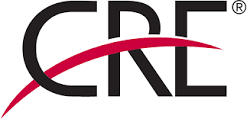Over the last two years, several markets around the U.S. have as seen an exponential growth in demand for industrial and office space from firms in the telecommunications industry. Warehouses and former retail facilities (i.e. malls) that stood empty for years have been leased or purchased and subsequently turned into telecom buildings, carrier hotels, and data centers. Requirements can range from 50 sq. ft to 500,000+ sq. ft., depending on specific use. Because of the significant expense of their specialized tenant improvements, lease terms average 10+ years.
Who are these firms and what drives their leasing and acquisition demands? What are the features that these firms typically require and how can space best be modified to meet their needs? What is the best way a real estate broker can help these firms? These are just some of the questions that we address in this article as we delve into the hot topic of “Telco Property”.
Demand for Telco Property
The U.S. market has dramatically changed over the last 5-7 years with the emergence of the internet. Currently, 44.1 million of the US population are online shoppers and an additional 37.5 million of the population intend to be online within the next 12 months. (Source: Zona Research) It is no longer the odd or unique item that moves from dusty shelves to a willing buyer through the power of the internet. Companies like Amazon.com and HomeGrocer.com allow everyday consumers to buy books, medicine, groceries and clothes online. As internet use goes up, bandwidth needs increase. This need for bandwidth is key to the demand for Telco property.
Bandwidth is the amount of data that can be transferred over a circuit. Companies that host web sites need higher bandwidth because they expect more traffic (visits to the web site). Telecommunications companies who have fiber in the ground offer bandwidth connections to businesses and other internet providers. These telecommunications companies and providers can be household names such as AT&T, Sprint, MCI WorldCom, SBC Communications, Pacific Bell, Time Warner, Verizon and GTE. Telephone companies (“Telcos”) and cable operators have a head start in that they already have fiber in the ground, which they can lease directly to companies or to other providers. It is expensive and time consuming to “lay fiber” into the ground so the closer a business or provider is to fiber, the less expensive it is to connect to that fiber.
When Telcos want to sell connections to their fiber, they set up what’s called a “Switch” or “Hub”. This facility will allow the Telco to meet the demand in the area. This space is generally small and houses cables and other telecommunication equipment. This segment of the telecommunications industry is critical as it provides the essential element that is required for data to move from one location to another, even around the world. However, this doesn’t fully explain the recent jump in demand.
Large and small businesses are finding it more cost effective to “house” (store) their servers in off-site locations called data centers. This means that they don’t have to build infrastructure or pay for large bandwidth connections in their own facility. More than 80% of U.S. small businesses that had web sites in 1999 used a Hosting Service Provider. Hosting Service Providers include the same Telco companies already mentioned as well as newer names such as Global Crossing, ICG Telecom, Exodus, Qwest, Williams and Level3. These additional hosting services require Telcos to build state-of-the art data centers from which they can house customer servers.
Telco Property Supply
According to EndGame Advantage, a competitive intelligence firm helping technology companies, “the amount of data center existing square footage is expected to triple over the next year alone.” Mary Weston, Principal Analyst at EndGame Advantage states, “We have definitely seen an increase in marketing efforts by the real estate community to target technology companies. The problem is that many buildings being marketed as ‘Telecom Buildings’ do not contain the necessary features telecommunications companies need to run data centers. Telecommunications companies we’ve talked to including Pacific Bell, Sprint and Level3 all state that authentic ‘Telco property’ is hard to find.”
EndGame Advantage found that the two factors critical in the selection process for a Telco Property was location and “time-to-market”. “Location is by far the biggest contributing factor when looking at Telco property. When asked to rank 5 criteria for building selection, our primary research indicated that this was the 1st or 2nd consideration. When placing 2nd in this list, it was invariably behind ‘time-to-market’.”
Location and time-to-market both involve the proximity of the property to fiber. Buildings that are located next to fiber make it easier to “pull fiber into the building” (establish the connection to the underground fiber). Companies such as Integrated Data Centers (IDC), a network management, consulting and implementation services provider, offer fiber analysis studies to help locate buildings suitable for Telco use. According to IDC, the availability and proximity of fiber can be the deciding factor for Telcos when choosing locations.
Telco Property Features
The trend for developers has been to take Class B and Class C buildings and retrofit them to meet the needs of the telecommunications market. Older buildings with heavy concrete exteriors and floor load structures of 250 lbs. psf are best suited for these “Telecom Buildings”. Because the top priority is the server environment, other factors such as parking, landscaping and office space are not as important in these buildings.
Another popular trend is to market multi-tenant Telecom buildings as “Carrier Hotels”. In a Carrier Hotel situation, a “meet-me room” is added to the Telecom Building that is used to distribute fiber among tenants. The concept here is that Telcos are used as “anchor tenants”. Once a few Telcos are in place, other technology companies like Hosting Service Providers will see value in leasing space from the same building as the Telcos. As was mentioned earlier, it is costly and time consuming to run fiber to a building. If the Telco you wish to lease fiber from is in the same building, the cost savings can be as much as $14,000 a month for an OC3 fiber connection.
Carrier Hotels are being used by developers to convert old buildings into hot properties. Typically there is a primary location in the CBD of each city. Examples are Allegheny Center (Pittsburgh), Valley Building Telecom Hotel (St. Louis), Telecom Carrier Hotel Building (Dallas) and One Wilshire (Los Angeles). These Telecom Buildings and Carrier Hotels usually offer shells to clients for build-out. This strategy has been extremely successful when Telcos are attracted to the building as “anchor tenants”. EndGame Advantage estimates that strong carrier hotels can ask as much as 50%-70% more than the prevailing office or industrial rates in certain geographic areas.
The following features are most commonly found in a Carrier Hotel:
| Features | Description |
| Access | Tenant Access to the building and premises on a 24/7 basis. This includes access to all client generators, supplemental HVAC, conduits and antennas. |
| Generator or HVAC | Pad Sites Usually tenants are required to supply their own condensing units and are allotted easement and riser space for necessary connections. Pad sites are also offered for secure generator space and fuel storage tanks often with no extra charge. |
| Conduits and Risers | Conduits and risers are delivered right to the suite. Riser space is provided for tenants to run additional conduits for direct connections to other telecom tenants in the building. |
| High Grade Electrical Power | Power offerings vary but are substantially higher than office space. In one example power was supplied at 16,000 amps of 480 volts, three-phase power per floor. |
| Floor Load | Floor load measurements are emphasized and can get as high as 250 lb. per sq. ft. |
| Antennae Placement | Placement In the successful “carrier hotel” we found, pad sites were made available on the roof for the placement of tenant’s antennae’s at no extra charge. This feature will be important with the burgeoning wireless market. |
| Fire Suppression | Tenants are given the ability to install their own system and tap into the buildings water riser. |
| Flooring | Raised flooring 16-18” or full overhead wire ladder management is ideal |
| Clear Height | Because equipment is stored on metal racks, a minimum 16’ of clear height is desired |
| Security | Alarm systems, elevator keypads, and 24/7 closed circuit monitoring may be included |
Corey Crommet of Rancho Santa Fe Technology – MCS, Inc. has spent the last 15 years designing and building data centers from ground up and retrofitting existing structures for data center use. According to Crommet, “ It is not uncommon for a Telco firm in the web hosting or colocation business to spend $100 psf to modify office space and $200 psf to modify “shell” warehouse space. In most markets, the largest issue is delivery of power. Assuming that the selected building has adequate power for the tenant’s initial demand, most electric utilities will require 12-18 months before they can install additional power or a sub-station on site.” Mr. Crommett is currently providing these types of services to some of the largest firms making entry into this market such as the Carlyle Group, Goldman Sachs and Legacy Development.
Getting Started
First, talk to companies such as Rancho Santa Fe Technology-MCS, Inc. and Integrated Data Centers. A targeted fiber and building capabilities analysis may help you pinpoint buildings that may be marketed to the Telco community. In addition, knowing what company has fiber located near these buildings can help identify them as ideal candidates to occupy the property. If you have an older building you think might be ideal as a Telco Building or Carrier Hotel, talk to the owner about the idea of making modifications to attract Telco clients. Firms like Rancho Santa Fe Technologies can not only provide estimates on what it would take to make the building attractive to these types of clients, but can assist you in representing the property to your targeted clients.
In parallel with this research, educate yourself on the industry. This article provides you with a starting point and a glossary of technical terms. Get to know the industry’s terminology, the firms in this market (and how they differ), and the characteristics they desire in a property. When you have a good grasp on this market, talk to your target Telcos. They are actively looking for space and may be interested in the Telco property you have available if they know it has been qualified by you to meet their unique property needs. It is an exciting evolution in our industry and we hope that this article will help you better meet the needs of your clients in the telecommunications world.
Stan Mullin, SIOR is a Senior Vice President in the Newport Beach, California office of Grubb & Ellis. You can learn more about his firm at www.grubb-ellis.com and he can be reached at stan@stanmullin.com. Corey Crommett is a principle with Rancho Santa Fe Technology – MCS, Inc. in Carlsbad, California. They specialize in the design, engineering and construction of all types of “mission critical facilities, such as Telco or Carrier Hotels. You can learn more about his firm’s www.rsf-mcst.com and he can be reached at cory@rsft-mcs.com or (760) 603-1790. Tim La Fazia is President and CEO of Integrated Data Centers, LLC. His firm specializes in Internet and telecommunications infrastructure discovery, design and development. You can learn more about his firm at www.integratedventures.com and he can be reached at tjlafazia@integrateddatacenters.com. EndGame Advantage is a Competitive Intelligence firm helping technology companies stay competitive in dynamic markets. EndGame can be reached at info@endgameadv.com.








